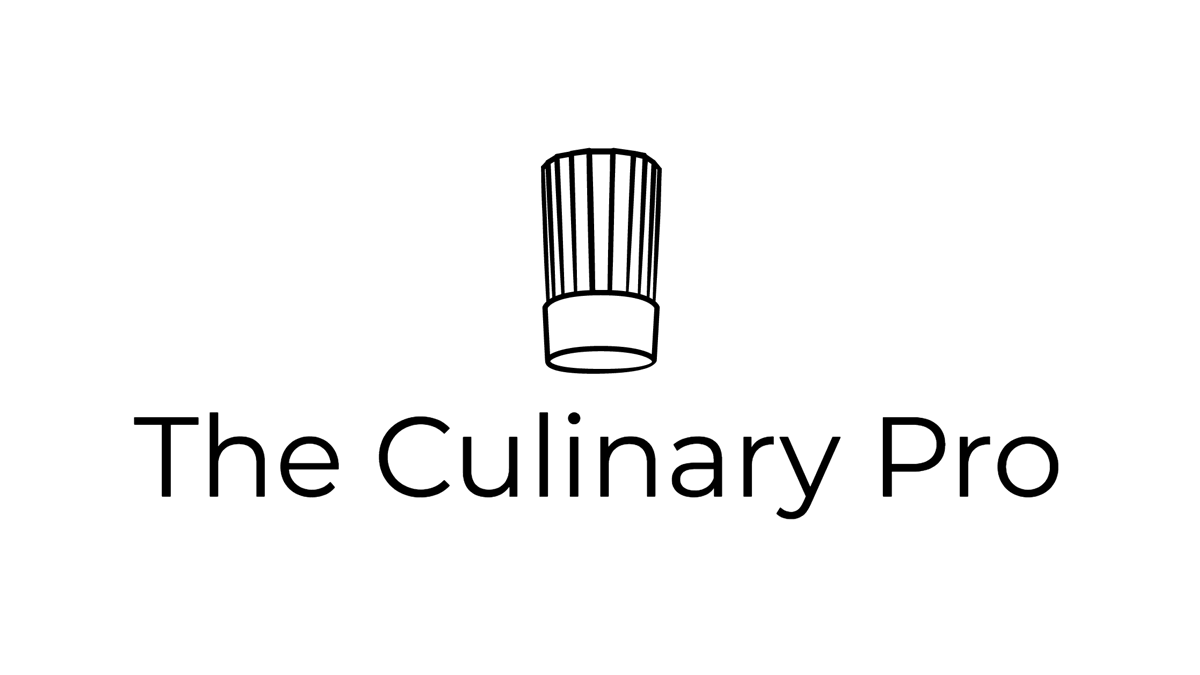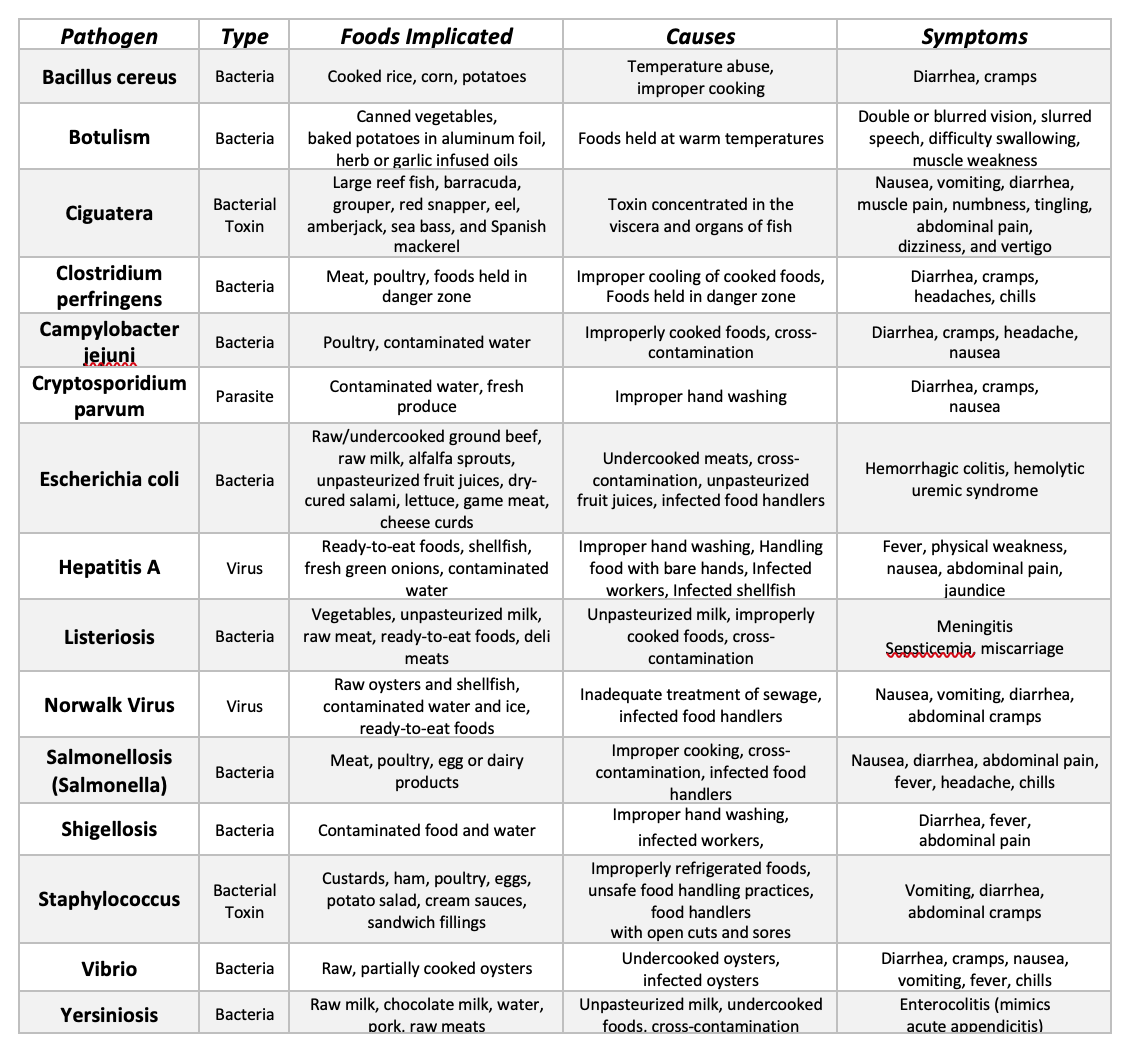Food Borne Pathogens
Biological hazards (bacteria, viruses, parasites, and fungi) create the most common problems related to food safety. That’s because foods containing microorganisms, called pathogens, or toxins created from them, can contaminate foods and cause food borne illnesses. Many of these pathogens cannot be seen, smelled, or tasted.
Bacteria – Single-celled organisms, known as bacteria, are the most common type of foodborne hazard. Although some bacteria are useful in kitchen production, for example the type created when fermenting pickles, other types are infectious disease-causing agents that multiply rapidly under the right conditions. Some bacteria on their own are not infectious but produce and release toxins that can cause illness.
Viruses – These small and simple life forms are not able to survive outside a living host cell but can survive for limited times on inanimate objects including door handles and foodservice equipment. Viruses are resistant to extremes in hot and cold and once established in food use it as a transportation device. Hepatitis A and Norovirus are two common food viruses.
Parasites - Trichinella Spiralis (trichinosis) found in pork, and Anisakis, roundworms found in fish, are examples of parasites that need a host to survive. Proper cooking kills some of these parasites.
Fungi – Molds and yeasts are types of fungi that affect foods. Some molds and yeast are beneficial, for example the yeast in bread, others cause food spoilage with toxic effect.
Foodborne Illnesses
The most common practices that contribute to foodborne illnesses include receiving foods from unsafe sources, time and temperature abuse, poor personal hygiene, and contaminated equipment (also known as cross-contamination). More than one of these conditions are often present in a foodborne illness outbreak.
Receiving Food from Unsafe Food Sources - Foods can be contaminated anywhere in the supply chain so it’s important to know the integrity of the food supplier. Approved food suppliers must meet state or federal food processing and inspection standards, and “homemade” foods should never be used in a commercial foodservice operation.
Poor Personal Hygiene – Employees who do not practice good personal hygiene can contaminate foods and spread diseases to customers by failing to wash their hands properly after going to the bathroom, by handling potentially hazardous foods (raw meats, poultry, and fish) and not washing their hands, by coming to work sick, coughing or sneezing on food, and touching or scratching wounds without washing their hands.
Time and Temperature Abuse – Certain categories of foods are known to be more potentially dangerous and must be time and temperature controlled for safety. These foods, known as TCS (time/temperature control for safety), include milk and dairy products, meats, poultry, fish and shellfish, eggs, baked potatoes, cooked rice, beans, and vegetables, tofu, sprouted seeds, sliced melons, diced tomatoes, and garlic-and-oil mixtures. Foods that have not been cooked to the proper degree of doneness, held at inadequate temperatures, or not properly reheated, promote the growth of foodborne pathogens.
Cross-Contamination – Cross-contamination occurs when improperly cooked foods are comingled without adequate cooking, when TCS foods (raw meats, poultry, fish) contaminate ready-to-eat foods like salads, through improperly sanitized equipment used for preparing different types of foods (raw meats and lettuces), or when contaminated towels touch food equipment.
Contaminated Equipment – Equipment and food preparation surfaces that are not cleaned properly can contaminate foods. Training employees to wash and sanitize work surfaces, tools, and small wares will prevent this problem.

